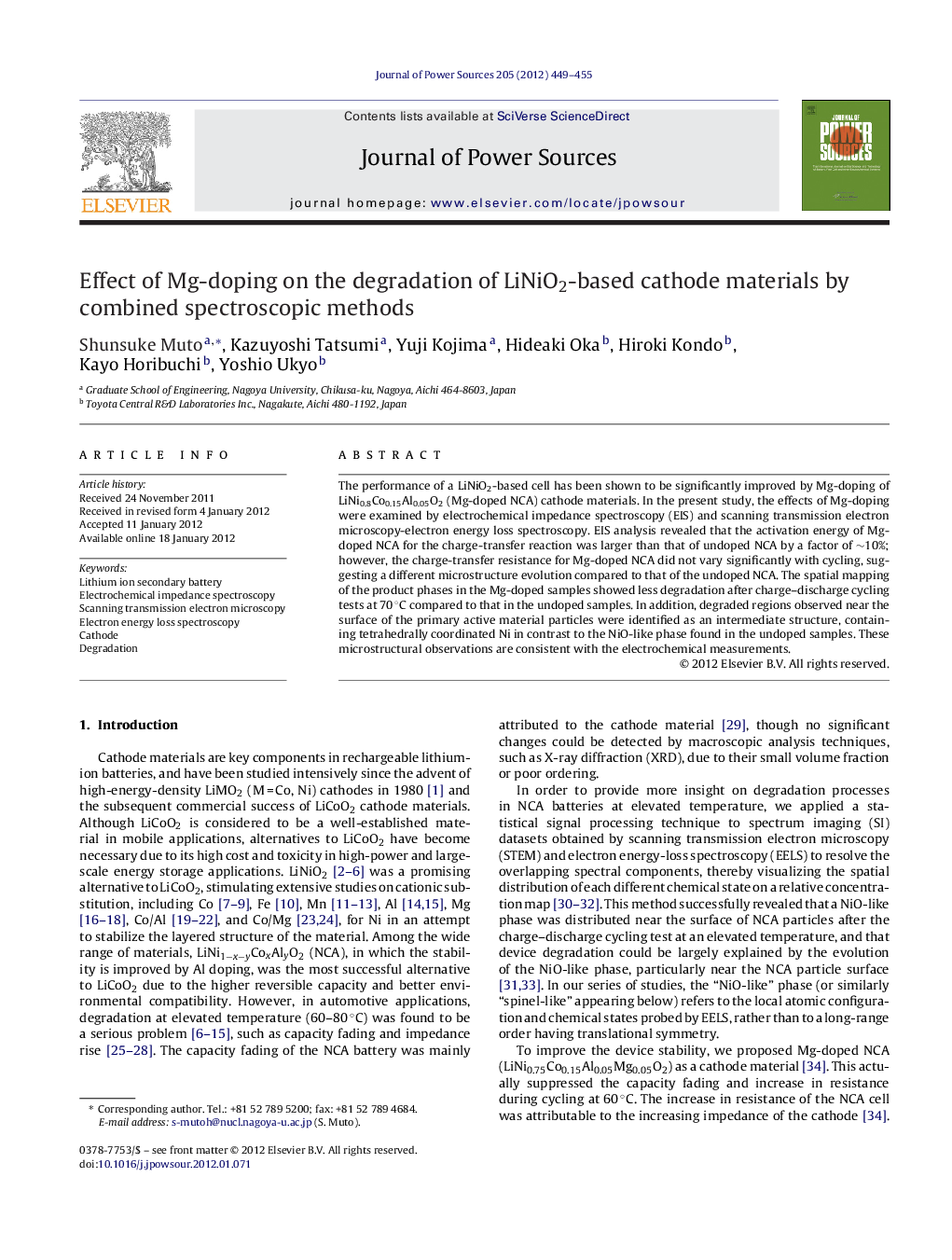| Article ID | Journal | Published Year | Pages | File Type |
|---|---|---|---|---|
| 1288166 | Journal of Power Sources | 2012 | 7 Pages |
The performance of a LiNiO2-based cell has been shown to be significantly improved by Mg-doping of LiNi0.8Co0.15Al0.05O2 (Mg-doped NCA) cathode materials. In the present study, the effects of Mg-doping were examined by electrochemical impedance spectroscopy (EIS) and scanning transmission electron microscopy-electron energy loss spectroscopy. EIS analysis revealed that the activation energy of Mg-doped NCA for the charge-transfer reaction was larger than that of undoped NCA by a factor of ∼10%; however, the charge-transfer resistance for Mg-doped NCA did not vary significantly with cycling, suggesting a different microstructure evolution compared to that of the undoped NCA. The spatial mapping of the product phases in the Mg-doped samples showed less degradation after charge–discharge cycling tests at 70 °C compared to that in the undoped samples. In addition, degraded regions observed near the surface of the primary active material particles were identified as an intermediate structure, containing tetrahedrally coordinated Ni in contrast to the NiO-like phase found in the undoped samples. These microstructural observations are consistent with the electrochemical measurements.
► Mg doping to LNCA cathode suppresses production of NiO-like phase by 70 °C cycling. ► Mg doped cathode exhibits thin surface layers containing tetrahedrally coordinated Ni. ► The microstructural changes explain how degradation is suppressed by Mg-doping.
